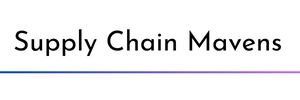iStock image by nd3000
A report by the Business Continuity Institute (BCI) found that organizations that reported more than 20 supply chains disruptions in a year jumped by a staggering 500% in 2020. And that was in the past. Today, disruption is a constant.
To prevent all the great solutions your supply chain professionals put in place from clashing with each other, you need to start with an overall, end-2-end supply chain framework.
Once you have an organizing framework, it is easier to combine all projects into a strategic initiative so as to organize and prioritize what must happen and to make sure your supply chain is matured in a carefully planned manner.
But with digital/sustainability/cybersecurity/growth all demanding your time, what’s a smaller business to do? Or even a larger business?
It all costs money.
It all must be done.
Jumping off of APQC’s blog on three important aspects to be paid attention to in 2024, let’s fill in potential options that should enable your supply chain to handle what is coming. We’ll look at one that could sink any small, or large, business.
First, remember, supply chains are partnerships from one end to the other. Small, midsized, and large businesses are all mixed into those partnerships. And partnerships can be so much more than just delivery of goods and services.
APQC: More organizations will advance the digitization of their supply chains
What is needed to advance digitalization?
For one, appropriate skill sets are a large requirement.
Not just digital software care and choice. Supply chain best practices that match your business/supply chain performance strategy skill sets are required.
Digitalization must start with requirement setting enabled by supply chain practice knowledge.
Does your business not have the skill sets needed? Or perhaps you do not even know where to start. Click here to start understanding – for all levels of supply chain training.
Can’t afford training?
In the U.S., ask your community college continuing education department for grant money available to pay for employee training. This applies to large and small businesses. Community colleges obtain grant funds from the federal government. Supply chain training (logistics, warehousing, inventory management, procurement, assembly,…) is one of the highest occupational priorities the federal government lists to fund. Even if the college does not have the supply chain expertise in house, it can bring in 3rd parties that do specialize in supply chain training. The Department of Labor funds apprenticeship training as well.
No local funding available?
Ask the large business(es) in your supply chain for help by including some of your employees in their upcoming trainings. Because: the larger entity is already paying for the course, it needs partner compliance to enable supply chain performance, and strengthened relationships with supply chain partners should improve extended supply chain performance. With all these benefits, this option becomes a win-win scenario.
If the large entity supply chain does not need/plan to train its people in the areas its partners need?
Ask if the larger entity would provide low interest financing to cover bringing in specific high value supply chain classes with customization followed by a bit of consulting to help identify the requirements for digitalization.
Why the training/consulting mix?
When identifying requirements, you will first identify the end state you want in the future. This future is dependent upon the processes and practice maturity in your supply chain.
A supply chain best practice assessment will provide you with maturity levels now and a next step/future plan to build the capabilities you need. Consultants provide both the assessment and analysis of your supply chain – often for free. Find more here.
By phasing in capabilities and capacities, growth and scale will be broken into realistic capacity building stages to get to your end state safely.
You will also receive improved supply chain performance while you build.
Does the larger entity have an outreach or a Corporate Social Responsibility (CSR) program small businesses fit into?
What might you find there? Potential:
help to successfully apply for and receive money through the IRA (Inflation Reduction Act) for corporate funding for training and systems. Network partners may not have the expertise or capacity to write the proposals required to get to the funding. Could the larger entity help?
provide network introductions to allow partner alliances to be built that should help lower prices for shipping and delivery, or energy, or raw materials, or ….
delivery of help with forecasting, or data storage, the wanted digitalization, or cloud applications, or …. If the larger entity has unused system or cloud space, could system space be segmented to allow small partners to lease unused space? Why purchase a whole new system if you only need a small bit?
assistance with optimizing product flows and inventory management.
provision of scholarships for specific supplier personnel to be trained.
inhouse apprenticeship training on the supply chain.
sharing of trucks to reduce costs and increase agility.
partnering in negotiations for specific raw materials, such as those more ecologically friendly, or energy sourcing to help with GHG reductions at the scope 3 level, and
so much more due to the different, unique values each company brings to the marketplace.
Being digitally enabled is not an option. It is a must have.
How to get it and afford it will require some ingenuity on the part of smaller supply chain partners.
Luckily, today, there are more options than ever.
#supplychain #training #digitalization #digitization #supplychaintraining #supplychainpartners #funding #SupplyChainMavens #CynthiaKalinaKaminsky
Cynthia Kalina-Kaminsky is an ASCM Master SCOR instructor and consultant. She’s also a supply chain professional.
Supply Chain Mavens is teaming up with Process and Strategy Solutions to offer SCOR classes.
Learn more about the courses and register on the Process and Strategy Solutions website.

